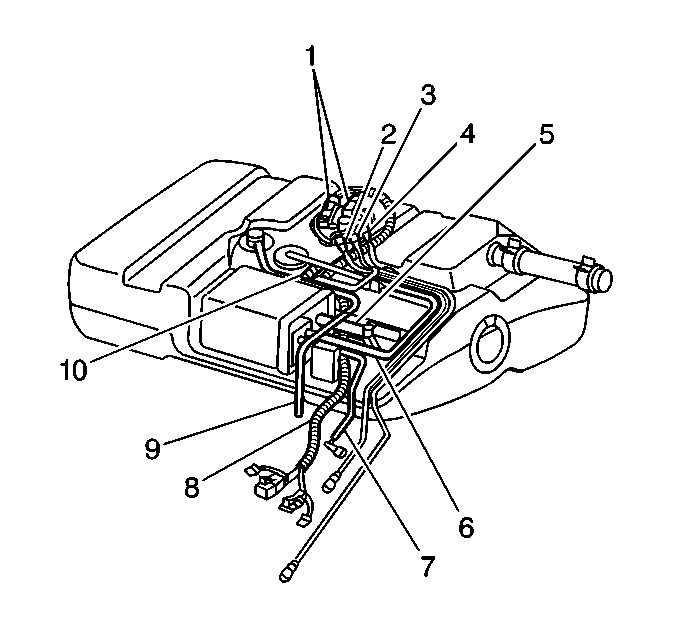Caution: Place a dry chemical (Class B) fire extinguisher near the area before performing a Fuel Tank Leak Check. Before removing the fuel tank for a suspected leak, make sure that the fuel pipes or the tubes are not leaking onto the tank. Once removed, make sure that the fuel is not leaking around the fuel sender O-ring. Failure to follow these precautions may result in personal injury.
Important: This check requires a fuel sender assembly, a fuel sender seal, a fuel fill pipe, a fuel fill hose, fuel fill hose clamps and a fuel filler cap to be installed in the fuel tank.
- Disconnect the negative battery cable.
- Relieve the fuel system pressure. Refer to the Fuel Pressure Relief Procedure .
- Drain the fuel tank. Refer to Fuel Tank Draining .
- Remove the fuel tank. Refer to Fuel Tank Replacement .
- Remove the EVAP vent valve. Refer to Evaporative Emission Vent Valve Replacement .
- Remove the EVAP canister. Refer to Evaporative Emission Canister Replacement .
- Remove the fuel feed pipe (4), the fuel return pipe (2), and the fuel sender EVAP pipe to fill limiter vent valve (3).
- Plug the fuel feed pipe and the fuel return pipe on the fuel sender assembly.
- Plug the fill limiter vent valve nipple (10).
- Plug the over pressure relief valve hose (9).
- Connect a piece of hose to the EVAP pipe (3) on the fuel sender assembly.
- Apply a soap solution to the outside of the fuel tank.
- Apply 10 kPa (1½ psi) air pressure to the piece of hose on the fuel sender EVAP pipe. Air bubbles appearing from the fuel tank indicate a leak.
- Replace the fuel tank if it is leaking. Refer to Fuel Tank Replacement .

Caution: Unless directed otherwise, the ignition and start switch must be in the OFF or LOCK position, and all electrical loads must be OFF before servicing any electrical component. Disconnect the negative battery cable to prevent an electrical spark should a tool or equipment come in contact with an exposed electrical terminal. Failure to follow these precautions may result in personal injury and/or damage to the vehicle or its components.
Notice: Do not submerge the fuel tank assembly in water in order to check for leaks in the fuel tank. Submerging the fuel tank in water may damage the electrical components mounted on the fuel tank.
